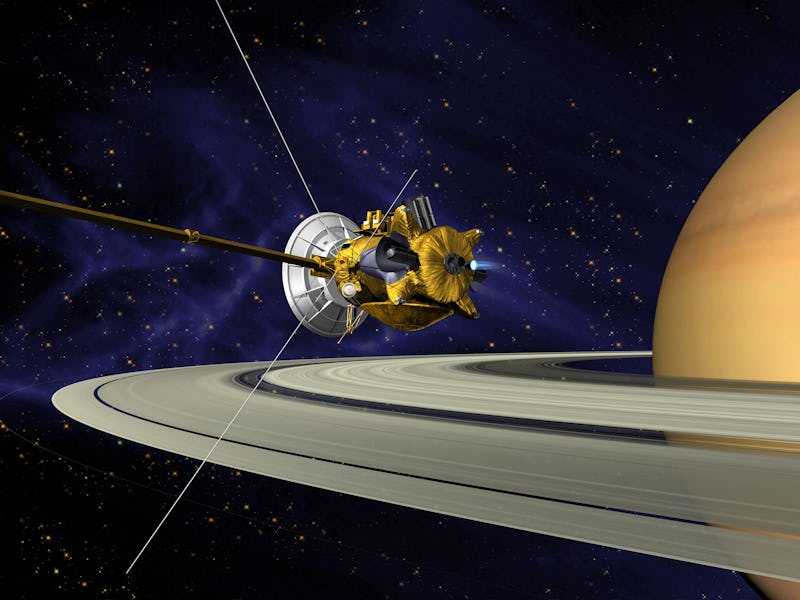After its 20-year-long sojourn in space, on September 15, NASA’s Cassini spacecraft plunged into Saturn’s atmosphere, becoming one with the longtime object of its study. While many continue to mourn the loss of this benevolent spacecraft, NASA announced a bit of unexpected good news this month — one piece of Cassini survived, and it’s wandering around space right now.
According to NASA, the aluminum shell of one of Cassini’s instruments, called the Cosmic Dust Analyzer (CDA), was “jettisoned in order to open the instrument’s aperture” back in 1997. The CDA itself stayed on the spacecraft, of course, and was used to study tiny particles within Saturn’s rings.
But since the CDA cover came off the spacecraft in its nascency, it never reached the Saturn system, and didn’t burn up in the planet’s atmosphere like the rest of the probe.
“This early cover release was necessary in order to begin measurements of the interplanetary and interstellar dust background,” NASA writes in an article about the CDA.
The CDA. (NASA/JPL-Caltech)
Inverse has reached out to NASA to find out where the CDA might be right now. According to a post the agency wrote about the instrument back on December 22, it expects that the CDA cover is traveling in an “Earth-like orbit” with an “approximate speed of 19 miles per second (30 kilometers per second).” It may be bright enough to be visible with a very powerful telescope, but so far, NASA hasn’t been able to confirm that.
The Cassini mission, which ended this past September, left Earth on October 15, 1997. It entered the Saturn system on June 30, 2004, where it spent the next 13 years observing Saturn and several of its moons, including Enceladus, Tethys, Dione, Helene, Rhea, Titan, Iapetus, and Phoebe.
This "Farewell to Saturn" is a mosaic of images from Cassini. (NASA/JPL-Caltech/Space Science Institute)
While Cassini fans would probably love to see this piece of the spacecraft in a museum, it’s highly unlikely that NASA would spend the time and money needed to recover it. After all, it’d be a really expensive trip for an aluminum cover.
That said, maybe the best way to remember Cassini isn’t by bringing back a piece of it that has already been lost to the cosmos. The scientific data and images that Cassini beamed back to Earth will inspire new discoveries for years to come. With that, the best mission of our lifetime lives on forever — a piece of it orbiting alone just adds to that poetry.
If you liked this article, check out this video of what it looks like to land on an alien moon.
